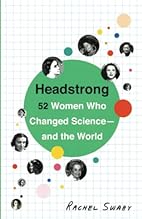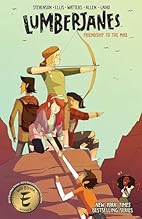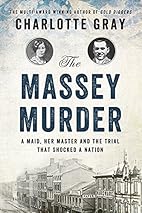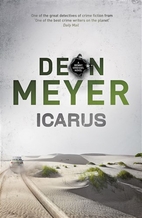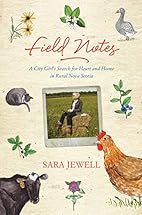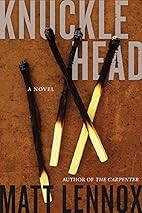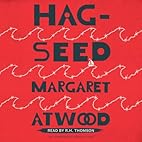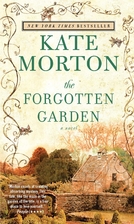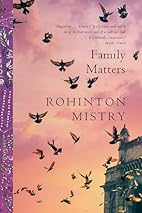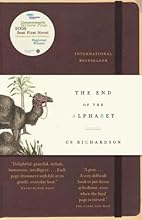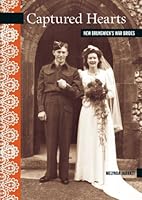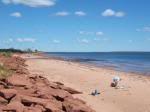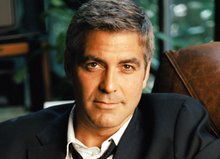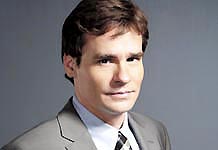A Single Shard by Linda Sue Park, 152 pages
Newbery Award 2002
Set in 12th century Korea, this sweet little book follows an orphan boy, Tree-Ear, as he takes a fascination with a local potter. Their village in Korea was renown for its pottery and innovation in the art. Lots of information on Tree-Ear learning the process, trying to get along with the master potter, a little road trip to deliver a vase to the king. Social aspects of being poor, fitting in, pride, and moral decisions balance the pottery info. As a kid I probably would have found it boring, but I liked it as an adult.
(I tried to get my 13 year old daughter to read but she found it boring after 15 pages.)
The Graveyard Book by Neil Gaiman, 302 pages
Newbery Award 2009
Another win for Gaiman. Lovely book about Nobody Owens (Bod) who grows up in a cemetery after his family is murdered. It takes a little magic to allow him to see the residents of the graveyard but they agree to raise him. Lots of folklore, and mythology as Bod grows up - meeting ghouls, and witches, and a Hound of God. All of these lead to the exciting final chapter as Bod fights for his life.
Easy to read, Gaiman develops characters in a way that you care about them and become invested in their lives. The ghosts in the graveyard are interesting even if they are only mentioned for a small interaction.
If you want to read another book set in a cemetery, try Waiting for Gertrude by Bill Richardson. Someday I will find someone else who has read this fun gothic book.
Friday, March 31, 2017
Wednesday, March 29, 2017
BOOK: David and Goliath by Malcolm Gladwell
David and Goliath: Underdogs, Misfits, and the Art of Battling Giants by Malcolm Gladwell, 7 h
Does any one do popular science and narrative nonfiction better than Gladwell? I've read several books - Blink, The Tipping Point, and listened to most of What the Dog Saw. Gladwell narrates his own book, and he does a great job.
The basic thesis here is that in the *David and Goliath battle, we see David as the underdog. But Gladwell argues that we mostly misunderstand what we think an advantage or disadvantage is. He kept referring to a U-shaped graph, which is just a parabola and he could have used that big science word after describing what it was.
The examples he uses for his analogies are great and he can use them to continually demonstrate his point. For example, most teachers agree that smaller class sizes are better. (I definitely agree!) However, does this work continually? That is, if 25 is better than 32, and 18 is better than 25, is 12 even better? And I can tell you anecdotally that it is not better. Small is good, but there is such a thing as too small. Not enough variety of voices, difficult discussions, no place to hide, and because they students get to know each other so well, they can bicker like siblings, knowing exactly how to push each other's buttons. (although the correcting does become easier) Hence, the idea of a parabola. Pardon me, a U-shaped graph. So, immediately I got his point and was with him for the ride!
Other examples of the U-shaped curve are described. In terms of advantages and disadvantages, he uses an example of people with dyslexia and how there are a good number of extremely successful people who had dyslexia. Because of the struggles (disadvantages) they faced in school, they developed strategies to overcome this. And these strategies become their advantages.
His theories are easy to follow, and I like learning with analogies. I am always trying to find analogies to explain concepts to my classes. I think I am pretty good at it too. Here's a quick one: Gravitational mass and inertial mass are two different ideas of describing mass. However, Einstein proved that they are fundamentally the same thing. Just like I have different names in different places - Mom at home, Mrs MacAulay in the classroom, and Liz in the staffroom. And in each place, I have a different role. But I am still the same person even if I do different things in different places with different names.
Northern Ireland, California's three strikes rule, basketball strategies, and cancer researchers are just some of the situations Gladwell uses to demonstrate his point of how underdogs turn their supposed disadvantages into their advantages.
*David: Did you know that the statue of David in Florence was given to the city by Michaelangelo to represent the little guys against the tyranny of the local government? That David statue is the same David from David and Goliath. I didn't know that until I saw the statue in Italy.
Does any one do popular science and narrative nonfiction better than Gladwell? I've read several books - Blink, The Tipping Point, and listened to most of What the Dog Saw. Gladwell narrates his own book, and he does a great job.
The basic thesis here is that in the *David and Goliath battle, we see David as the underdog. But Gladwell argues that we mostly misunderstand what we think an advantage or disadvantage is. He kept referring to a U-shaped graph, which is just a parabola and he could have used that big science word after describing what it was.
The examples he uses for his analogies are great and he can use them to continually demonstrate his point. For example, most teachers agree that smaller class sizes are better. (I definitely agree!) However, does this work continually? That is, if 25 is better than 32, and 18 is better than 25, is 12 even better? And I can tell you anecdotally that it is not better. Small is good, but there is such a thing as too small. Not enough variety of voices, difficult discussions, no place to hide, and because they students get to know each other so well, they can bicker like siblings, knowing exactly how to push each other's buttons. (although the correcting does become easier) Hence, the idea of a parabola. Pardon me, a U-shaped graph. So, immediately I got his point and was with him for the ride!
Other examples of the U-shaped curve are described. In terms of advantages and disadvantages, he uses an example of people with dyslexia and how there are a good number of extremely successful people who had dyslexia. Because of the struggles (disadvantages) they faced in school, they developed strategies to overcome this. And these strategies become their advantages.
His theories are easy to follow, and I like learning with analogies. I am always trying to find analogies to explain concepts to my classes. I think I am pretty good at it too. Here's a quick one: Gravitational mass and inertial mass are two different ideas of describing mass. However, Einstein proved that they are fundamentally the same thing. Just like I have different names in different places - Mom at home, Mrs MacAulay in the classroom, and Liz in the staffroom. And in each place, I have a different role. But I am still the same person even if I do different things in different places with different names.
Northern Ireland, California's three strikes rule, basketball strategies, and cancer researchers are just some of the situations Gladwell uses to demonstrate his point of how underdogs turn their supposed disadvantages into their advantages.
*David: Did you know that the statue of David in Florence was given to the city by Michaelangelo to represent the little guys against the tyranny of the local government? That David statue is the same David from David and Goliath. I didn't know that until I saw the statue in Italy.
Sunday, March 26, 2017
BOOK: Finding Wonders: Three Girls Who changed Changed Science
Finding Wonders: Three Girls Who changed Changed Science by Jeannine Atkins, 186 pages
I never would have found this wonderful book without the Women in Science challenge this month, so thank you DoingDewey for hosting. This might be my favourite book of the year!
First of all, look at this wonderful cover. Three girls, faces hidden, as these unfamous/unknown women would become. The white sketches around the edges represent the science that each studied.
Weirdly, I liked this even though it is written in blank verse. This is the first book I've read like this and it would never be my first choice, but it seems to work here. It might be that using blank verse to tell a science story employs both parts of my brain. I like literature and science and to get both at the same time is pretty cool.
The three girls are Maria Sibylla Merian from the late 1600s in Germany; Mary Anning from the early 1800s, in England; and Maria Mitchell from 1800s America. Nice balance of eras and countries, and subjects - creatures, earth and sky. Atkins does an amazing job of balancing the facts with the story, the science with the life.
Maria Sibylla Merian was the Painter's Daughter who studied caterpillars and moths and butterflies. Recognized that caterpillars were born from eggs, and documented the life cycle of insects. With her painting background, she also painted the life cycles. Merian travelled to Suriname with her eldest daughter to study bugs in other countries. Nobody in those days just travelled like that.
Mary Anning was the Carpenter's Daughter who became expert at finding fossils in the rocks along the shore in southern England. Desperately poor, Mary sold her fossils but then was the first to find a full body dinosaur fossil. Uneducated, she never got any respect and just 'found' the fossils, but she knew as much as anybody about the creatures she found. I knew quite a bit about Anning because I read Remarkable Creatures by Tracy Chevalier. (I highly recommend!)
Maria Mitchell was the Mapmaker's Daughter who loved to study the night sky and discovered a comet. She broke away from her Quaker background eventually, and became a teacher of astronomy at Vassar.
They all had father's who encouraged their daughter's search for knowledge. They all followed their passion for knowledge. They all were remarkable.
Reading this book so soon after Headstrong: 52 Women Who Changed Science and the World by Rachel Swaby may have helped my enjoyment as I had just read a snippet of a biography of each of these women so they were somewhat familiar.
I never would have found this wonderful book without the Women in Science challenge this month, so thank you DoingDewey for hosting. This might be my favourite book of the year!
First of all, look at this wonderful cover. Three girls, faces hidden, as these unfamous/unknown women would become. The white sketches around the edges represent the science that each studied.
Weirdly, I liked this even though it is written in blank verse. This is the first book I've read like this and it would never be my first choice, but it seems to work here. It might be that using blank verse to tell a science story employs both parts of my brain. I like literature and science and to get both at the same time is pretty cool.
The three girls are Maria Sibylla Merian from the late 1600s in Germany; Mary Anning from the early 1800s, in England; and Maria Mitchell from 1800s America. Nice balance of eras and countries, and subjects - creatures, earth and sky. Atkins does an amazing job of balancing the facts with the story, the science with the life.
Maria Sibylla Merian was the Painter's Daughter who studied caterpillars and moths and butterflies. Recognized that caterpillars were born from eggs, and documented the life cycle of insects. With her painting background, she also painted the life cycles. Merian travelled to Suriname with her eldest daughter to study bugs in other countries. Nobody in those days just travelled like that.
Mary Anning was the Carpenter's Daughter who became expert at finding fossils in the rocks along the shore in southern England. Desperately poor, Mary sold her fossils but then was the first to find a full body dinosaur fossil. Uneducated, she never got any respect and just 'found' the fossils, but she knew as much as anybody about the creatures she found. I knew quite a bit about Anning because I read Remarkable Creatures by Tracy Chevalier. (I highly recommend!)
Maria Mitchell was the Mapmaker's Daughter who loved to study the night sky and discovered a comet. She broke away from her Quaker background eventually, and became a teacher of astronomy at Vassar.
They all had father's who encouraged their daughter's search for knowledge. They all followed their passion for knowledge. They all were remarkable.
Once again, she takes her time sweeping her telescope,This is a sample of the blank verse - not so hard to read. It made me even more impressed with the author and how she managed to tell these three stories in such a unique way, short but thorough. (Each biography is only about 60 pages)
slowly as a painter shifting the tip of her brush,
or a girl scanning stones. Beauty rambles more than it rushes.
There's always more than what's first seen.
Reading this book so soon after Headstrong: 52 Women Who Changed Science and the World by Rachel Swaby may have helped my enjoyment as I had just read a snippet of a biography of each of these women so they were somewhat familiar.
Thursday, March 23, 2017
BOOK: Headstrong: 52 Women Who Changed Science and the World by Rachel Swaby
Headstrong: 52 Women Who Changed Science and the World by Rachel Swaby, 226 pages, plus 50 pages of notes, bibliography, and index
A 2013 obituary in the NYT for Yvonne Brill started with 'world's greatest mom' and followed up with describing how she made a mean beef stroganoff and followed her husband around in his work. Eventually, her work as a rocket scientist made the obit. The uproar over this lack of respect was the inspiration for this wonderful biography of 52 STEM women. Two main criteria - no longer living women, and not Marie Curie. Not disrespecting Marie Curie, she's just usually the first woman scientist, or the only one, that gets mentioned. Swaby does a great job writing, keeping things light, sometimes sarcastic but jam-packed with details, and makes this an easy to read and highly interesting book.
Some names I knew - Mary Anning, Rosalyn Franklin, Rachel Carson and because I have a poster called 'Women in Science' in my classroom, Maria Mitchell, Lise Mietner, Ada Lovelace, Maria Goeppert Mayer, and Barbara McClintock. I didn't always know the specifics of their contribution but this book filled in the gaps. The categories of study were divided into Medicine, Biology and the Environment, Genetics and Development, Physics, Earth and Stars, Math and Technology, and Invention.
Each woman gets a short (3-6 page) biography, with a little about their life, but mostly about their love of their subject, and the tenacity that was required to do the work they did. Many had to work in universities for no money because women technically weren't allowed in. Too many worked with collaborators who took the credit.
The nature of the book means that I don't remember the name and the contribution of very many of the women. Too much info for a reader like me who doesn't take in names very well. The overall effort and contributions will be remembered however. I think I would really like to have this book as a resource in my classroom, to be able to look up scientist and her work, and her challenge.
A 2013 obituary in the NYT for Yvonne Brill started with 'world's greatest mom' and followed up with describing how she made a mean beef stroganoff and followed her husband around in his work. Eventually, her work as a rocket scientist made the obit. The uproar over this lack of respect was the inspiration for this wonderful biography of 52 STEM women. Two main criteria - no longer living women, and not Marie Curie. Not disrespecting Marie Curie, she's just usually the first woman scientist, or the only one, that gets mentioned. Swaby does a great job writing, keeping things light, sometimes sarcastic but jam-packed with details, and makes this an easy to read and highly interesting book.
Some names I knew - Mary Anning, Rosalyn Franklin, Rachel Carson and because I have a poster called 'Women in Science' in my classroom, Maria Mitchell, Lise Mietner, Ada Lovelace, Maria Goeppert Mayer, and Barbara McClintock. I didn't always know the specifics of their contribution but this book filled in the gaps. The categories of study were divided into Medicine, Biology and the Environment, Genetics and Development, Physics, Earth and Stars, Math and Technology, and Invention.
Each woman gets a short (3-6 page) biography, with a little about their life, but mostly about their love of their subject, and the tenacity that was required to do the work they did. Many had to work in universities for no money because women technically weren't allowed in. Too many worked with collaborators who took the credit.
The nature of the book means that I don't remember the name and the contribution of very many of the women. Too much info for a reader like me who doesn't take in names very well. The overall effort and contributions will be remembered however. I think I would really like to have this book as a resource in my classroom, to be able to look up scientist and her work, and her challenge.
Wednesday, March 22, 2017
BOOK: Lumberjanes by Noelle Stevenson, Shannon Watters, Grace Ellis, Brooke Allen
Beware the Kitten Holy
Friendship to the Max
A Terrible Plan
Out of Time
Band Together
These graphic novels are a wonderful series! A group of five diverse girls from one bunk house, along with their semi-hapless bunk leader, find themselves in a series of adventures. The adventures have a supernatural element - other worlds, mermaids, werewolves, monsters that sneak into the otherwise real life setting of the books. Each book I read was a compilation of four individual comic books that combine into one story arc. The end of the volume also contains extra artwork, which seems to be many other cartoonists' take on the characters, or other covers for each comic.
The girls (Mal, Ripley, Molly, April, and Jo) are great friends, and respect each others strengths and quirks. There is lots of humour in the books. Even the names of characters are based on famous people. I recognize some - I assume Ripley is from Alien and Jo is a little woman. Their bunk leader, Jen, is continually misnamed by the camp director, as those J names can be easily confused. One of my favourite parts of the books is the exclamatives pronounced instead of swearing, that are famous (women) names. I miss a good number of them, but as soon as you recognize one, you realize that all the names are famous kick-ass women. What in the Joan Jett? It is such a cool part of the books that there are websites which document the names, and gives a biography of them. Here's a good one. I'm very pleased with myself when I recognize one.
There are lots of great details, including the badge requirements, the pledge, and the supporting characters - the Scouting Lads across the lake show up sometimes, but the girls always save the day.
Friendship to the Max
A Terrible Plan
Out of Time
Band Together
These graphic novels are a wonderful series! A group of five diverse girls from one bunk house, along with their semi-hapless bunk leader, find themselves in a series of adventures. The adventures have a supernatural element - other worlds, mermaids, werewolves, monsters that sneak into the otherwise real life setting of the books. Each book I read was a compilation of four individual comic books that combine into one story arc. The end of the volume also contains extra artwork, which seems to be many other cartoonists' take on the characters, or other covers for each comic.
The girls (Mal, Ripley, Molly, April, and Jo) are great friends, and respect each others strengths and quirks. There is lots of humour in the books. Even the names of characters are based on famous people. I recognize some - I assume Ripley is from Alien and Jo is a little woman. Their bunk leader, Jen, is continually misnamed by the camp director, as those J names can be easily confused. One of my favourite parts of the books is the exclamatives pronounced instead of swearing, that are famous (women) names. I miss a good number of them, but as soon as you recognize one, you realize that all the names are famous kick-ass women. What in the Joan Jett? It is such a cool part of the books that there are websites which document the names, and gives a biography of them. Here's a good one. I'm very pleased with myself when I recognize one.
There are lots of great details, including the badge requirements, the pledge, and the supporting characters - the Scouting Lads across the lake show up sometimes, but the girls always save the day.
Which Lumberjane Are You?
You got: April
You’re small but mighty! When push comes to shove, you’ve got a cute scrunchie and two fists. Your friends need the perfect nail polish to go with their skirt? A stone god defeated to save the day? You’re the one they call.
Tuesday, March 21, 2017
TOP TEN TUESDAY: Books on my Spring TBR List
Top Ten Tuesday is hosted at The Broke and the Bookish each week. The topic last week was Top Ten Books on my Spring TBR List. I totally missed this one last week but it's my favourite lists to do each quarter so I'm making my list a week late. Oops! My books consist of nonfiction, mysteries from a series, Canadian authors, and audiobooks I have on request.
Massey Murder: A Maid, Her Master, and the Murder Trial that Shocked a Nation
by Charlotte Gray
by Charlotte Gray
Icarus by Deon Meyer
Book #5 in Benny Griessel series set in South Africa
Book #5 in Benny Griessel series set in South Africa
Field Notes: A City Girl's Search for Heart and Home in Rural Nova Scotia
by Sarah Jewell
Canadian Nonfiction
by Sarah Jewell
Canadian Nonfiction
Seinfeldia by Jennifer Keishin Armstrong
Nonfiction audiobook about Seinfeld!
Nonfiction audiobook about Seinfeld!
The Kept Woman by Karin Slaughter
Gets me up to date on Will Trent mystery series, audiobook
Gets me up to date on Will Trent mystery series, audiobook
Knucklehead by Matt Lennox
Canada Reads longlisted book
Canada Reads longlisted book
Shrill by Lindy West
Nonfiction feminist book
Hag-Seed by Margaret Atwood
Audiobook on request, Canadian, and
Bailey's Prize long-listed book
The Forgotten Garden by Kate Morton
book club book
Nonfiction feminist book
Hag-Seed by Margaret Atwood
Audiobook on request, Canadian, and
Bailey's Prize long-listed book
The Forgotten Garden by Kate Morton
book club book
Monday, March 20, 2017
BOOK: March Volume 1,2, and 3 by John Lewis
I've undertaken a spontaneous modern American history self-directed course in this past year. First, it was listening to Most Dangerous: Daniel Ellsberg and the Secret History of the Vietnam War by Steve Sheinkin. The title mentions Vietnam, but it really was about how Nixon and Watergate happened. Fascinating!
The next was Argo: How the CIA and Hollywood Pulled Off the Most Audacious Rescue in History by Antonio Mendez. This was in my recent memory as I can remember the American hostages saved by the Canadian ambassador in Iran in 1980.
Finally, I've read the three volume set March by John Lewis. Lewis was involved in a little spat with Trump back in January around the time of the inauguration. I happened to have requested this book at the library just a week or so before that all blew up and these graphic novels flew to #1 on Amazon. I really didn't know anything about Lewis before January, and now having read his memoir, I am amazed and humbled by what Lewis accomplished in the 1960s, along side Martin Luther King Jr.
The construct of the book, framing Lewis' memories of the Civil Rights battle of the 1960s with Obama's inauguration in 2008 was extremely powerful and moving. The horrific situations of segregation and violence that were still going on in the 60s made me sick. Clearly, Trump is not familiar with Lewis' life because Lewis deserves to be a national treasure and revered along side Martin Luther King Jr. and can not be considered, as Trump tweeted, "All talk, talk, talk - no action or results. Sad!" If ever there was a person who was not all talk, it was John Lewis. His principled life of non-violence and action were eye-opening.
Everyone should read this book. (Can someone send Trump a copy?)
Monday, March 6, 2017
BOOK: Family Matters by Rohinton Mistry
Family Matters by Rohinton Mistry, 480 pages
Booker Shortlist 2002
I've had this book for a long time, as it sat patiently, waiting to be read. I read A Fine Balance back in 2004, and then the rest of Mistry's books: Tales from Firozsha Bay (short stories) and Such a Long Journey, even a short story book, The Scream. And, I am realizing that Mistry hasn't published a new book since 2002. ( The short story was in 2006.) Come on fella, you write such good books, we'd like another one!
This one is a family story, set in Bombay, dealing with an aging father. Families are complicated and messy and supportive and not, all at the same time. What I liked was how similar families are every where, and how real the characters were.
Summary from Amazon:
At the age of seventy-nine, Nariman Vakeel, already suffering from Parkinson’s disease, breaks an ankle and finds himself wholly dependent on his family. His step-children, Coomy and Jal, have a spacious apartment (in the inaptly named Chateau Felicity), but are too squeamish and resentful to tend to his physical needs.
Nariman must now turn to his younger daughter, Roxana, her husband, Yezad, and their two sons, who share a small, crowded home.
The family is Parsi, a minority in Bombay. The added pressure on their finances strains Yezad and Roxana's relationship. Yezad was so interesting - in some ways a bad guy (impatient and cranky), but also a good guy (kind and trying his best). He was just flawed, not happy with how life has turned out but helpless to make many changes. Really, not much happens but at the time, everything is a big deal. Mistry writes such great characters, dealing with tough situations that by the end of the book, the reader is cheering for things to turn out (relatively) okay, and I did drop a few tears, both happy and sad.
Booker Shortlist 2002
I've had this book for a long time, as it sat patiently, waiting to be read. I read A Fine Balance back in 2004, and then the rest of Mistry's books: Tales from Firozsha Bay (short stories) and Such a Long Journey, even a short story book, The Scream. And, I am realizing that Mistry hasn't published a new book since 2002. ( The short story was in 2006.) Come on fella, you write such good books, we'd like another one!
This one is a family story, set in Bombay, dealing with an aging father. Families are complicated and messy and supportive and not, all at the same time. What I liked was how similar families are every where, and how real the characters were.
Summary from Amazon:
At the age of seventy-nine, Nariman Vakeel, already suffering from Parkinson’s disease, breaks an ankle and finds himself wholly dependent on his family. His step-children, Coomy and Jal, have a spacious apartment (in the inaptly named Chateau Felicity), but are too squeamish and resentful to tend to his physical needs.
Nariman must now turn to his younger daughter, Roxana, her husband, Yezad, and their two sons, who share a small, crowded home.
The family is Parsi, a minority in Bombay. The added pressure on their finances strains Yezad and Roxana's relationship. Yezad was so interesting - in some ways a bad guy (impatient and cranky), but also a good guy (kind and trying his best). He was just flawed, not happy with how life has turned out but helpless to make many changes. Really, not much happens but at the time, everything is a big deal. Mistry writes such great characters, dealing with tough situations that by the end of the book, the reader is cheering for things to turn out (relatively) okay, and I did drop a few tears, both happy and sad.
Sunday, March 5, 2017
BOOK: The End of the Alphabet and Captured Hearts
The End of the Alphabet by CS Richardson, 142 pages
Wispy little book about a couple, facing the last month of the husband's life. Ambrose Zephyr and Zappora Ashkenazi decide to travel the world from A to Z. We see them go to Amsterdam, Berlin and so on. (Around G I started checking if this would be all twenty-six letters, but his health begins to fail, and N-Z get lumped together.)
Eh, it was okay. I didn't get the beauty in the writing, but some reviews adore it; the characters were odd, rather literary; not depressing considering the topic.
I read this for my book club, and we all found it harmless, but it made little impression on any of us. We all agreed - at least it was short!
Captured Hearts: New Brunswick's War Brides by Melynda Jarratt, 148 pages
New Brunswick Military History Series (see also The Neighbourly War)
This is a nice little series of local history books. Although set in New Brunswick, I imagine the PEI experience was very similar for war brides. During WW2, many of the Canadian soldiers met and married girls from England and Europe. Some of the chapters explain the situations that led to this (the local boys were off fighting, the Canadian boys were in England and, mostly, just there to be dancing and hanging out with. Never underestimate the power of proximity in finding true love)
The book is well researched, and includes many anecdotes about the war brides, lots of pictures and maps. There are chapters about the English brides, and then the continental brides, the expectations and disappointments that met the brides as they arrived to join their husbands; and the fitting in that took place. Much of rural New Brunswick had no running water or electricity and some women found it quite and adjustment and perhaps they were given a different view of where they were headed. Many stuck it out, but there were also brides who turned around and went back home, some for very good reason. The stiff upper lip, you made your bed, attitude prevailed for a lot of women.
I didn't really realize how much the women in Britain did during the war. I knew they worked, drove ambulances and the gardening, but at one point, there were essentially conscripted into work for the homefront. That led to some of the adjustments, as these women were working, independent members of society, and then came to Canada and had, in many cases, 8-12 children and worked the farm. Just realizing how many 'lives' they lived is pretty impressive.
Wispy little book about a couple, facing the last month of the husband's life. Ambrose Zephyr and Zappora Ashkenazi decide to travel the world from A to Z. We see them go to Amsterdam, Berlin and so on. (Around G I started checking if this would be all twenty-six letters, but his health begins to fail, and N-Z get lumped together.)
Eh, it was okay. I didn't get the beauty in the writing, but some reviews adore it; the characters were odd, rather literary; not depressing considering the topic.
I read this for my book club, and we all found it harmless, but it made little impression on any of us. We all agreed - at least it was short!
Captured Hearts: New Brunswick's War Brides by Melynda Jarratt, 148 pages
New Brunswick Military History Series (see also The Neighbourly War)
This is a nice little series of local history books. Although set in New Brunswick, I imagine the PEI experience was very similar for war brides. During WW2, many of the Canadian soldiers met and married girls from England and Europe. Some of the chapters explain the situations that led to this (the local boys were off fighting, the Canadian boys were in England and, mostly, just there to be dancing and hanging out with. Never underestimate the power of proximity in finding true love)
The book is well researched, and includes many anecdotes about the war brides, lots of pictures and maps. There are chapters about the English brides, and then the continental brides, the expectations and disappointments that met the brides as they arrived to join their husbands; and the fitting in that took place. Much of rural New Brunswick had no running water or electricity and some women found it quite and adjustment and perhaps they were given a different view of where they were headed. Many stuck it out, but there were also brides who turned around and went back home, some for very good reason. The stiff upper lip, you made your bed, attitude prevailed for a lot of women.
I didn't really realize how much the women in Britain did during the war. I knew they worked, drove ambulances and the gardening, but at one point, there were essentially conscripted into work for the homefront. That led to some of the adjustments, as these women were working, independent members of society, and then came to Canada and had, in many cases, 8-12 children and worked the farm. Just realizing how many 'lives' they lived is pretty impressive.
Saturday, March 4, 2017
CHALLENGE: Women in Science History
My recommendations:
Galileo’s Daughter by Dava Sobel
Miss Leavitt’s Stars by George Johnson
Remarkable Creatures by Tracy Chevaliere (novel about Mary Anning)
Lab Girl by Hope Jahren
The books I am interested in reading:
Reviewed and Read:
Headstrong: 52 Women Who Change Science by Rachel Swaby
Obsessive Genious: The Inner World of Marie Curie by Barbara Goldsmith
Finding Wonders: 3 Girls Who Changed Science by Jeannine Atkins
The Stargazer's Sister by Carrie Brown (fiction)
Maria Mitchell: The Soul of an Astronomer by Beatrice Gormley
The Other Einstein by Marie Benedict (fiction)
The Rise of the Rocket Girls by Nathalia Holt (audiobook)
Hidden Figures by Margot Lee Shetterly (audiobook)
Even if I only get a couple read this month, I've got a list of books to come back to. I found this challenge at doingdewey, a blog I found last November during Nonfiction November. At that point, I was disappointed that I had read so few nonfiction books during the year. I read only 16 nonfiction books in 2016, and already I've read 16 nonfiction books in 2017. So, much better effort!
Reviewed and Read:
1. Headstrong: 52 Women Who Changed Science - Rachel Swaby
2. Finding Wonders: 3 Girls Who Changed Science - Jeannine Atkins
2. Finding Wonders: 3 Girls Who Changed Science - Jeannine Atkins
Subscribe to:
Posts (Atom)




